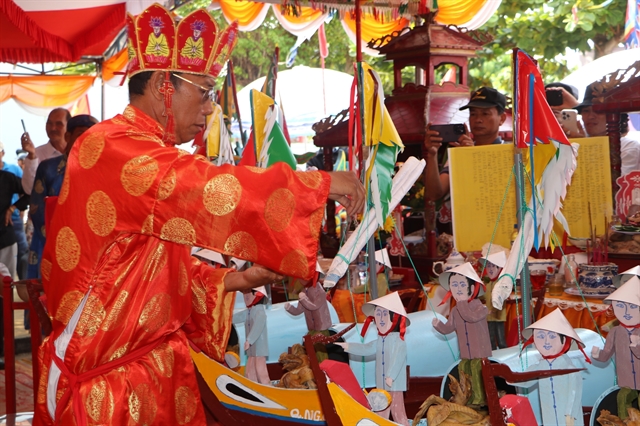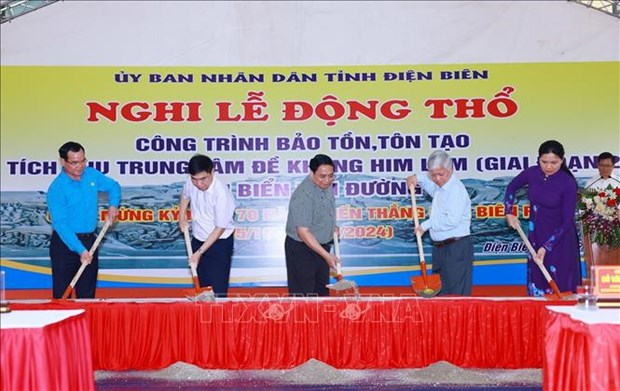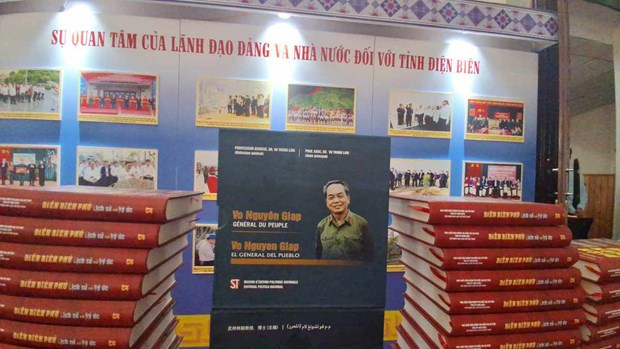 Environment
Environment
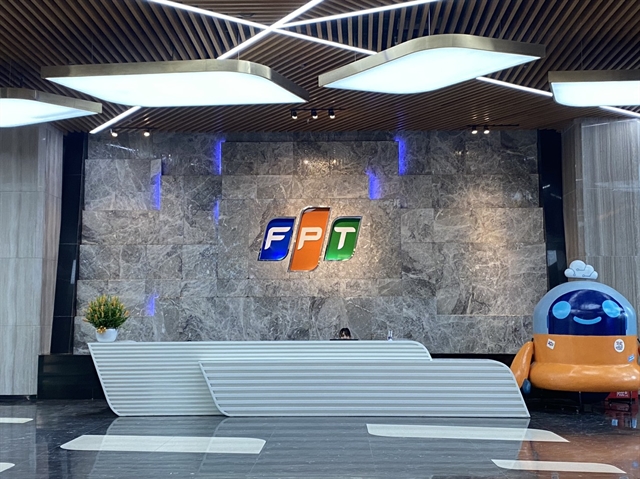
Overlapped and poor management among agencies has driven biodiversity in the Sơn Trà Nature Reserve into endangered situation, a biologist said in a dialogue on how to protect the red-shanked douc langur (Pygathryx nemaeus) in the Nature Reserve in Đà Nẵng city.
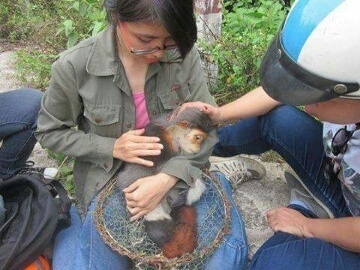 |
| A langur is found dead after falling into a trap in the Sơn Trà Nature Reserve in Đà Nẵng. — VNS Photos Bùi Văn Tuấn |
Hoài Nam
ĐÀ NẴNG — Overlapping efforts and poor management among agencies pose serious threats to biodiversity in the Sơn Trà Nature Reserve, a biologist said during a dialogue on protecting the red-shanked douc langur.
The Đà Nẵng-based reserve is home to 300 red-shanked douc langurs, which are critically endangered and found only in east-central Laos and Việt Nam. The animals are further threatened by illegal logging and rampant hunting.
Poor management resulted in the illegal logging of 10ha of forest in an area intended for local residents to use for commercial purposes. The case was only discovered when biologists from the Biodiversity Conservation Centre of GreenViet, an NGO in Đà Nẵng, took a field trip to the area.
An effective management board is essential to monitor forest protection and the disaster response measures.
However, the reserve has yet to establish a management board, as other reserves have done nationwide. It is being managed by different agencies, including the Sơn Trà-Ngũ Hành Sơn forest protection sub-department; Thọ Quang Ward’s administration; Sơn Trà peninsula’s management board of beaches and tourism; and the Border Guard, Air Defence and Navy.
GreenViet director Trần Hữu Vỹ criticised the fact that each agency only manages one assigned area, and they do not work together to handle common problems and threats. He added that agencies should more closely monitor visitors at the reserve entrance.
“(Both residents and tourists) need to be supervised at the entrance into the reserve,” Vỹ said. “Loggers or poachers could come to the protected forest easily if they do not have a check-in procedure at the control post.”
Vỹ, who spent over 10 years researching biodiversity in the Sơn Trà Nature Reserve, said illegal hunters would use steel wire traps and handmade air guns to kill wild animals for money. A live animal could earn an illegal hunter VNĐ6 million (US$285).
In 2015, five hunters from Nghệ An Province were arrested after they were caught with 100 traps, as well as a bag of dried meat and the bones of three red-shanked doucs.
The illegal hunters admitted that they had spent one month in the forest of Sơn Trà to hunt langurs.
The nature reserve has shrunk from over 4,400ha to 2,500ha to make room for the development of dozens of resorts and hotel projects in the area.
According to GreenViet’s latest survey, over 20 streams in the reserve have dried up – the worst it has seen in 20 years.
Vũ Ngọc Thành, a representative of the US-based Douc Langur Foundation, which operates as an NGO in Việt Nam, said the Sơn Trà Nature Reserve is a precious treasure of Đà Nẵng that needs a special protection policy.
“You could not find any place like Sơn Trà Nature Reserve, as visitors can watch the endangered primates at close range any time of the year, even in bad weather conditions,” Thành said.
He said scientists and biologists from the International Union for Conservation of Nature (IUCN) agreed to list the red-shanked douc langur as critically endangered with unlimited protection status in the world. The IUCN had previously listed the animal as endangered in 2013.
He said Đà Nẵng should choose the red-shanked douc langur as its symbol for promoting the rich biodiversity of the Sơn Trà Nature Reserve to the rest of the world.
Vỹ also suggested that the city create a special programme to protect biodiversity in the forest, as well as form an effective and uniform management team to handle illegal hunting and logging.
“It’s an urgent action, or biodiversity in the reserve will soon dwindle,” Vỹ said. “A checkpoint should be set up to control visitors at three main entrances into the Sơn Trà reserve, because over 10,000 visitors come to the reserve monthly.”
Nguyễn Thị Hiền, from the city’s Natural Resources and Environment Department, said the city has approved a plan through 2030 on the protection of biodiversity in Sơn Trà Nature Reserve.
She said the city plans to make the red-shanked douc langur the city’s symbol of biodiversity at the Asia Pacific Economic Co-operation Summit (APEC) in Đà Nẵng next year.
A series of communication campaigns and education programmes on the protection of the red-shanked douc langur were launched by GreenViet and the Douc Langur Foundation at primary schools in Đà Nẵng.
The Sơn Trà Nature Reserve, which is 600m above sea level, is known for its rich biodiversity, with 287 animal species and 985 plant species.
Despite an action plan outlined by the city administration, biologists and volunteers from GreenViet and rangers dismantled over 2,000 traps in the reserve, and continued to find traces of illegal hunting and logging in the area.
GreenViet is also co-operating with the Frankfurt Zoological Society of Germany, San Diego Zoo Global in the United States and the IUCN to protect the red-shanked douc langurs through long-term campaigns. — VNS

